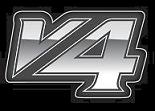
AUDIO CONFIGURATION
PREV: Audio Setup HOME NEXT: Tuning of Tracking
|
By default, the V4 Tracking Engine starts in manual mode and all Points, borders, level and delay values must be entered by the user. Working in manual mode is recommended when maximum flexibility is required and when the user is experienced in the setup of audio localisation systems.
Automatic Mode For ease and speed of audio setup, the V4 Tracking Engine now includes a powerful Automatic mode. For situations when setup time is short, such as is often the case with touring productions, V4 Automatic Mode includes presets designed for use with Stereo or L,C,R sound systems. (Additional front fill and delay speakers may be easily added later as required). Automatic Mode may be toggled on and off. In the V4 Tracking Engine software, go to Automatic Mode->Automatic Mode to activate Automatic Mode or to toggle between Automatic and manual modes. When entering Automatic Mode with no Points already placed on the front panline (as is the case when starting a new setup), the user will be directed to the Automatic Mode dialogue box where they have the option to choose to use one of the predefined system presets. The user is free to manually place Points on the front panline before entering Automatic Mode. Upon entering Automatic Mode, these Points will be used by the software as the basis for the generation of all subsequent upstage Points. The Automatic Mode dialogue box
Width Control Right-clicking on an empty area in a panline will open the Width Control window. The Width Control affects the pan width of the total panline. Initially, the Width Control sliders are linked and moving either will adjust both sides. Clicking the link button between the sliders will unlink the sliders to allow asymetric L/R panning. This can be especially useful in venues where it is not possible to hang a PA system symmetrically. The Width Control may be used to narrow the width of subsequent upstage panlines. It is often desirable that total pan width is narrower at the rear of the stage than at the front. As pan width is individually adjustable for each panline, effective localisation can be achieved at the edges of the stage as performers move in the upstage/downstage direction. Notes about using Automatic mode The editing options available to the user will change depending upon whether the software is in Automatic or manual mode. In Automatic mode, only Points on the front downstage panline are available to the user for editing. These Points are shown as light blue (active) or red (muted). The status and values contained in upstage Points are software generated and cannot be edited by the user. Upstage Points are shown in grey. In Automatic Mode, Points and borders may be moved, edited, added or deleted from the front panline only. All changes to Points on the front panline will be automatically and simultaneously reflected in the relevant upstage Points. In order to edit upstage Points, the user must exit Automatic Mode. To do this, go to Automatic Mode-> Automatic Mode and untick Automatic Mode on the drop down menu. Upstage Points will now change to a light blue or red and the values previously entered automatically in these Points will be made available to the user for editing. Should the user then re-enter Automatic Mode, only Points on the front panline will be retained. All upstage Points, even those that may have been edited by the user, will be deleted and regenerated by the V4 Tracking Engine, based on the values and status of Points currently on the front panline. Grid creation Grid creation is included in the V4 Tracking Engine as an extension of manual mode, allowing the user to start a zoned audio setup by defining an X by X grid. To access the Grid Creation dialogue box, go to Automatic Mode-> Create Grid. The Create Grid dialogue box will inform the user of the current maximum allowed grid size, determined by the current stage dimensions. The user is free to choose any size grid not exceeding the maximum limit. The V4 Tracking Engine will generate left/right and upstage/downstage borders automatically to create the grid. Borders may be dragged or deleted as required in order to achieve the actual desired stage layout. Once the grid has been created, the software leaves Automatic Mode and all Points, borders, level and delay values must be entered by the user. Grid mode may be preferable for use in certain performance situations, such as stages ”in the round” and for use by advanced users. Note that there is a current maximum allowable limit of 30 Points which can be placed on the grid. Main Screen View Options The drop down menu situated above the main performance area screen, allows the user to choose which elements they would like to see pictured on the screen. The options available relate closely to the status of the "padlock" icon. The "padlock" icon allows the user to lock the software, putting it into production mode. With the padlock icon in the unlocked position (default):
Viewing Tools Various selectable viewing tools are available by clicking the icons above the main viewing screen. These tools allow the user to move, zoom and rotate the view of the main screen. These functions are also available via the mouse by clicking and holding the Alt key. |
PREV: Audio Setup HOME NEXT: Tuning of Tracking